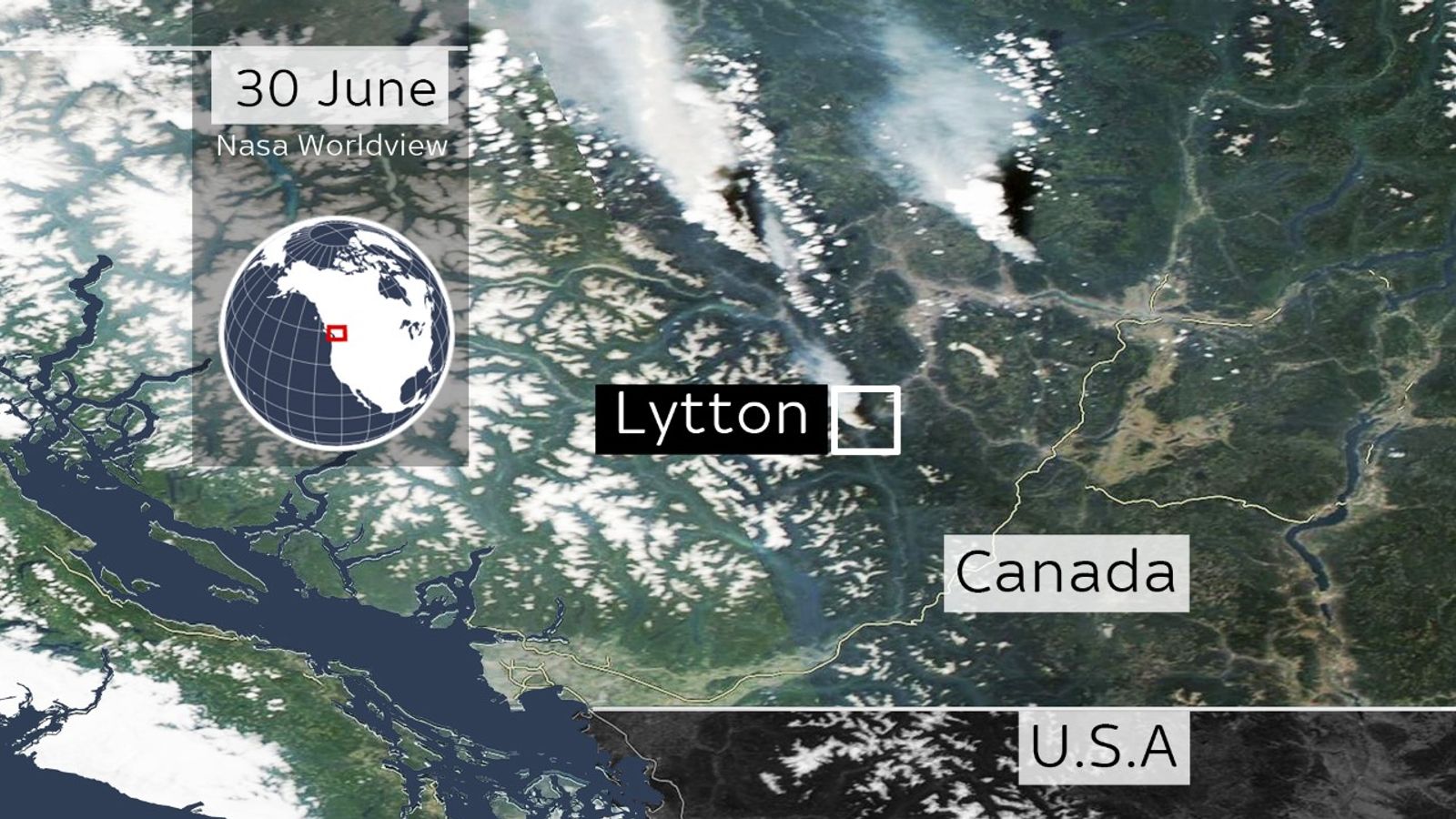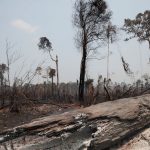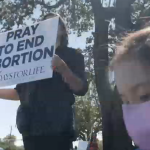Parts of Canada have seen temperatures as high as 50C (122F) in recent days – and now wildfires are spreading out of control.
Satellite imagery from NASA shows how the plumes of smoke sent up on the western side of the country can be seen from space.
The terrifying destruction can be summed up by the small town of Lytton, where around 1,000 residents had to flee with just minutes’ notice on Wednesday evening as smoke engulfed their homes.
Footage from the ground shows people fleeing in vehicles through hazy conditions, limiting vision to tens of metres.
The dingy daylight is only occasionally broken by engulfed trees at the side of the road.
Now residents are struggling to find each other in the chaos of extreme fires in the remote countryside of Canada.
The British Columbia Wildfire Service said the flames at Lytton were out of control over an area spanning around 30 square miles – but ash clouds can be seen being carried into the atmosphere from other parts of the region as well.
The soaring mercury is by a phenomenon known as a “heat-dome” – in which high pressure has trapped warm air from the Pacific and squashed it down over the land, like a lid on a saucepan helping water to boil.
A record temperature of 45.1C (113F) was set on Sunday, and the next day a new high of 47.9C (118F) was recorded.
Please use Chrome browser for a more accessible video player
Tuesday saw the third record in as many days – after it was found to be 49.6C (121F).
Things eased off slightly by Wednesday, but it was still uncomfortably warm at 39C (102F).
The dangers of such temperatures has seen hundreds of people die from the climate alone – and they aren’t just limited to Canada.
The US states of Oregon and Washington, both near to Lytton, have also recorded high temperatures, and fires have been seen in those two states and also California.
Blazes there will strike fear into the hearts of people who suffered through last year’s record-breaking wildfires.
Millions of acres burned. Thousands died.
Back in Lytton, they are dealing with the immediate aftermath of what happened this week.
Most people had just a few minutes to flee on Wednesday.
On Thursday, Mike Farnworth, British Columbia’s public safety minister, said that most homes and buildings in Lytton were destroyed, and that some residents were missing.
Lytton city council member Lilliane Graie, on behalf of mayor Jan Polderman, said that residents were “scattered north and south and we are trying to establish who is where”.
Rosanna Stamberg has been trying to track down son and daughter, Alfred and Marjorie Nelson, who lived about five miles from Lytton.
A lack of phone service has prevented her from getting in touch with them.
Ms Stamberg said: “I don’t know which direction they went. I don’t know if they went down towards Chilliwack. I don’t know if they went to Lillooet. I don’t know if they went to Spencer’s Bridge or Merritt or Kamloops. I have no idea.”
Fires can also be seen near Lillooet, to the north of Lytton.
To the south of Lytton, Jean McKay from the Kanaka Bar First Nations community said she and her daughter Deirdre, 22, panicked after the smell of smoke grew stronger and stronger.
“I was still sitting there and wondering what to pack, emotionally walking out my door but thinking ‘I’m leaving all this behind.’ It’s hard. Very hard,” Ms McKay said.
“My daughter phoned before we lost services and stuff, she’s telling us, ‘Get out of there, get out of there.'”
In a 24-hour period, 62 news fires were found – and 29,000 lightening strikes were recorded.
The terror of the past days could still be exacerbated in the future.
Canada is known for its cold snowy climate – but now that snow is melting, and the Fraser River which runs through Lytton has a flood warning in place alongside other waterways in the region.
Jim Abraham, the president of the Canadian Meteorological and Oceanographic Society, said: “With the freezing level rising above 6000m (20,000 ft), astounding melting is occurring in the mountain glaciers and snowpacks of the Canadian Rockies.”
He added: “This heat and lack of rainfall early in the summer may result in widespread wildfire risk in western Canada this summer.”






















